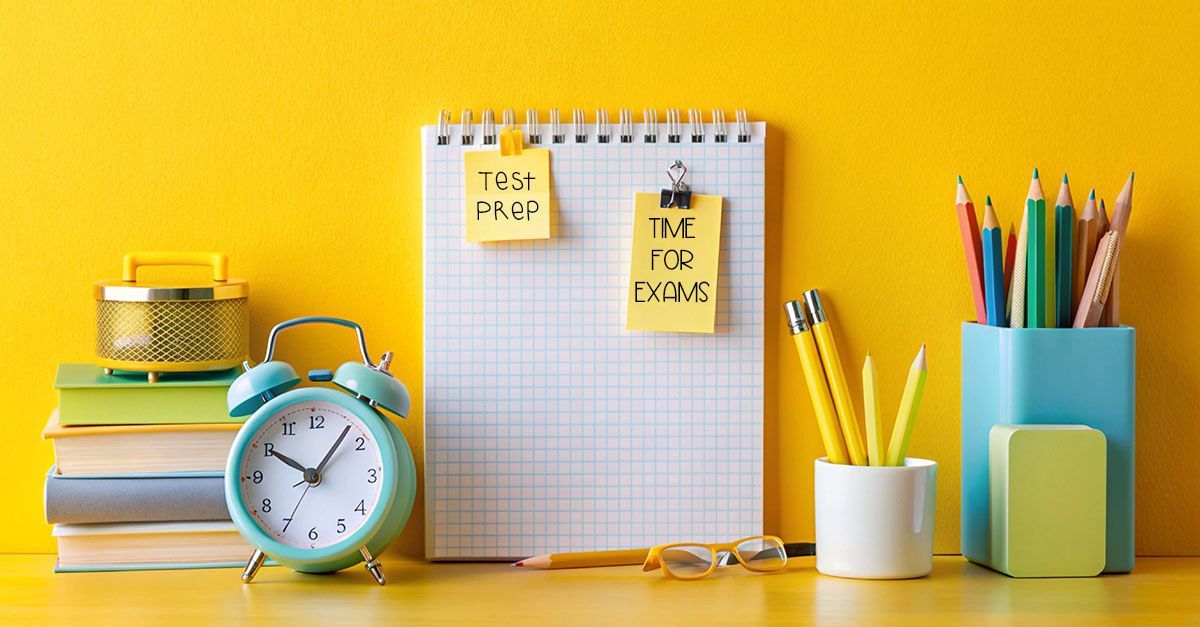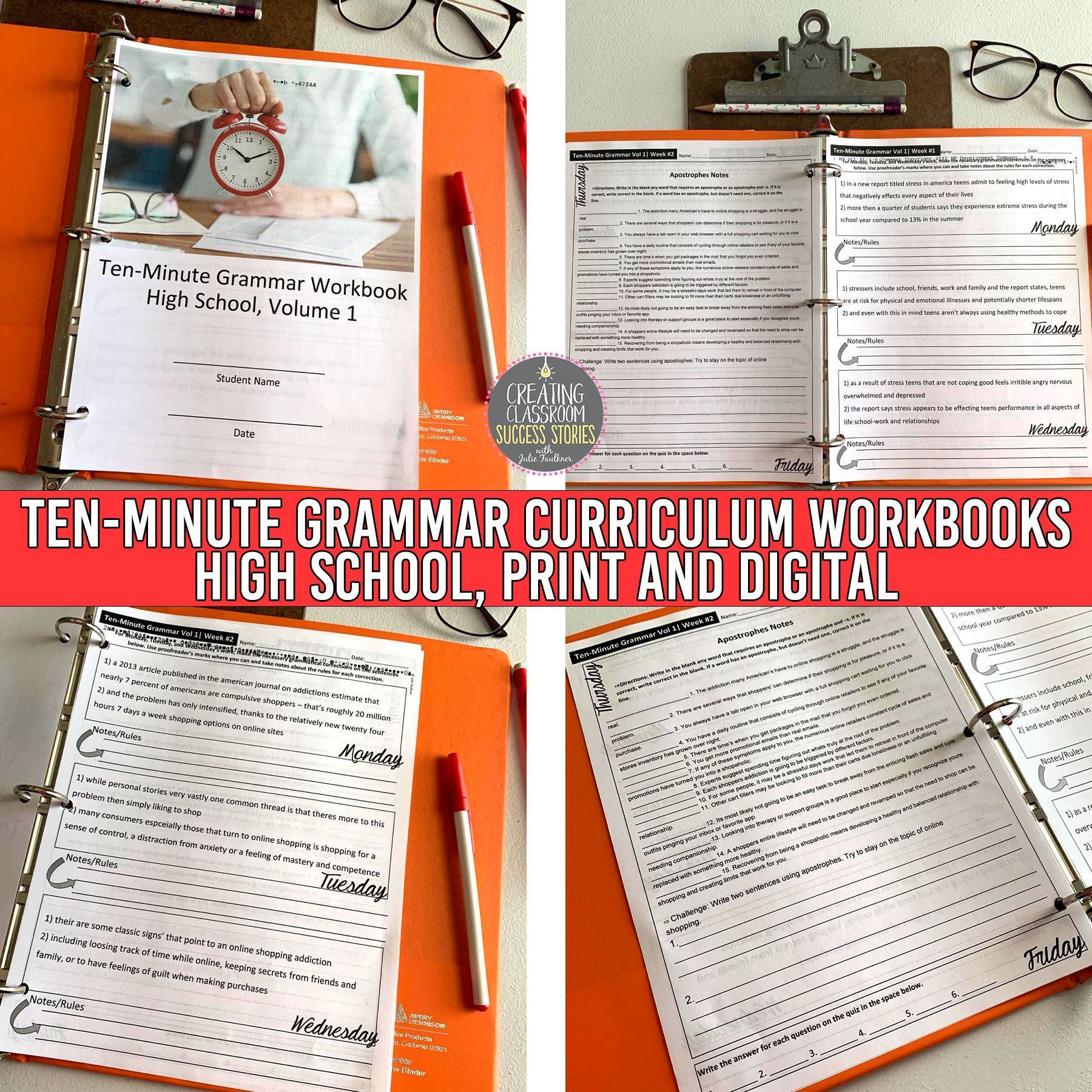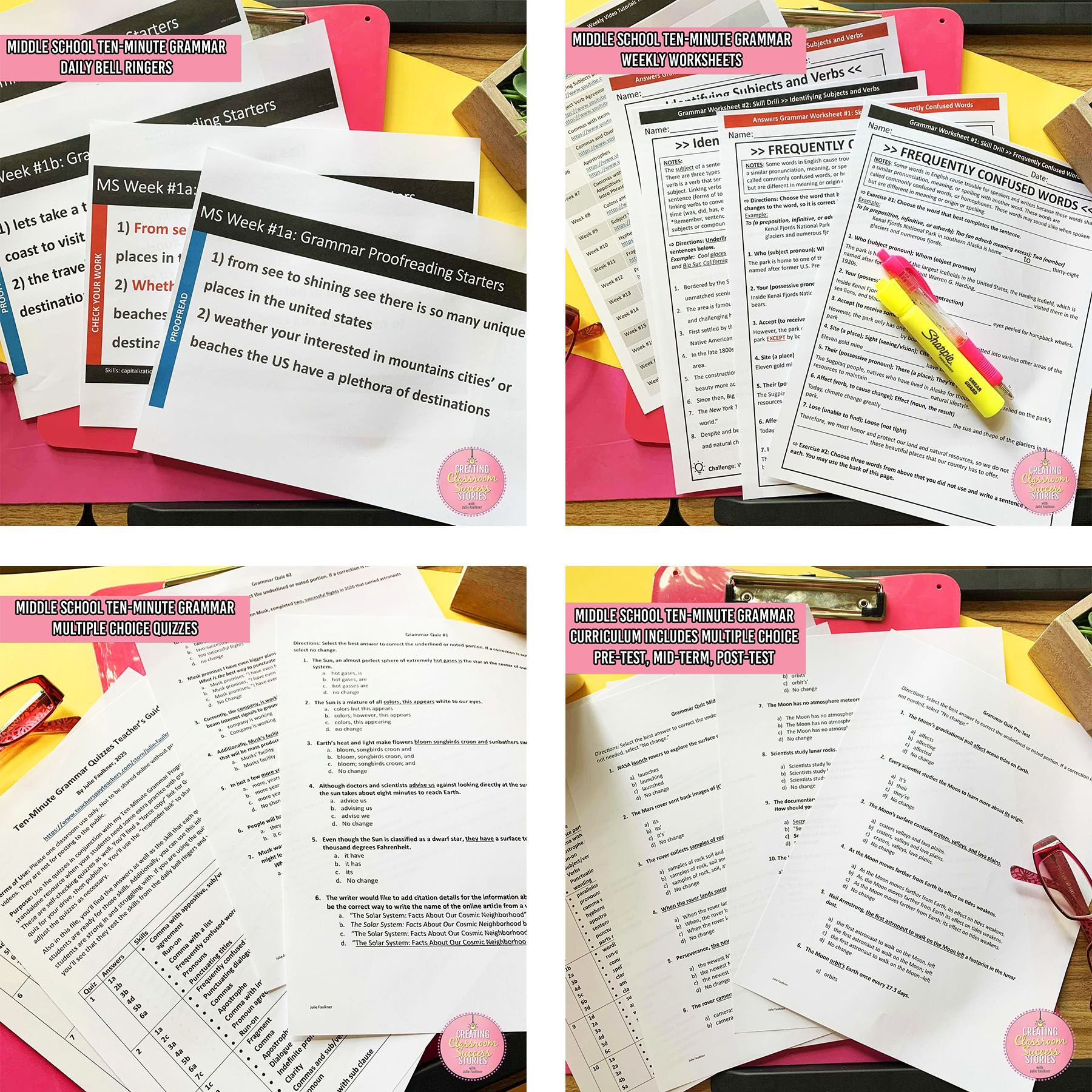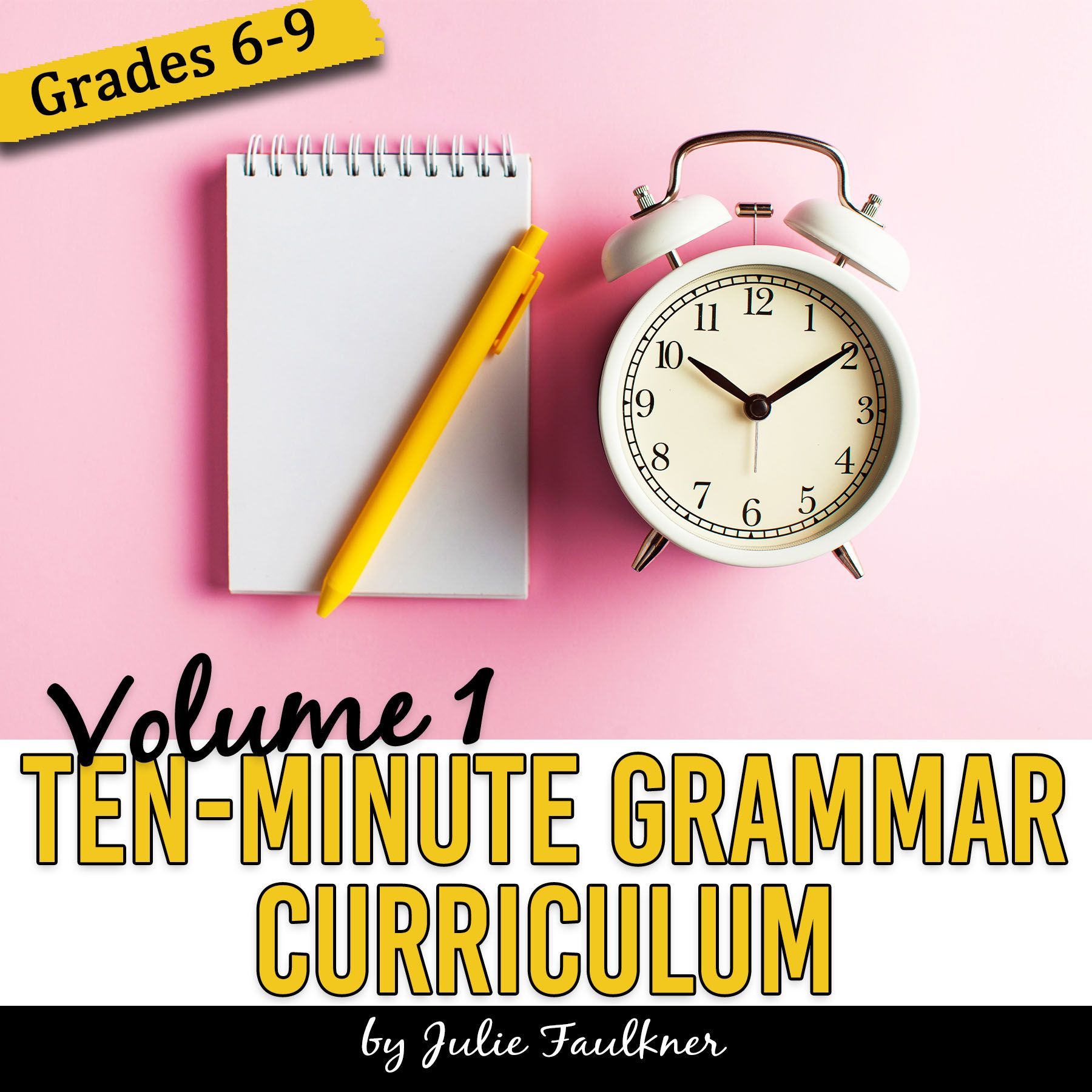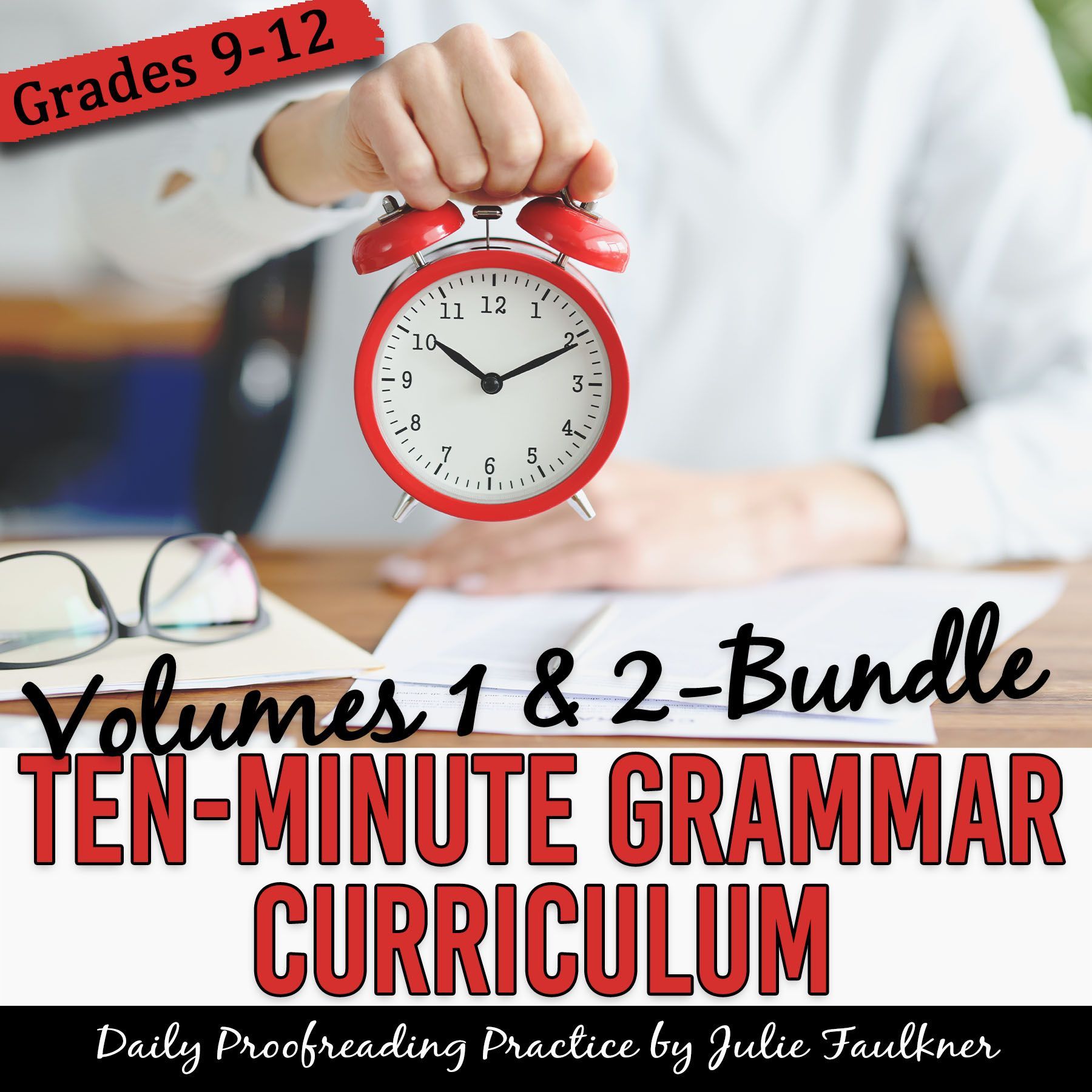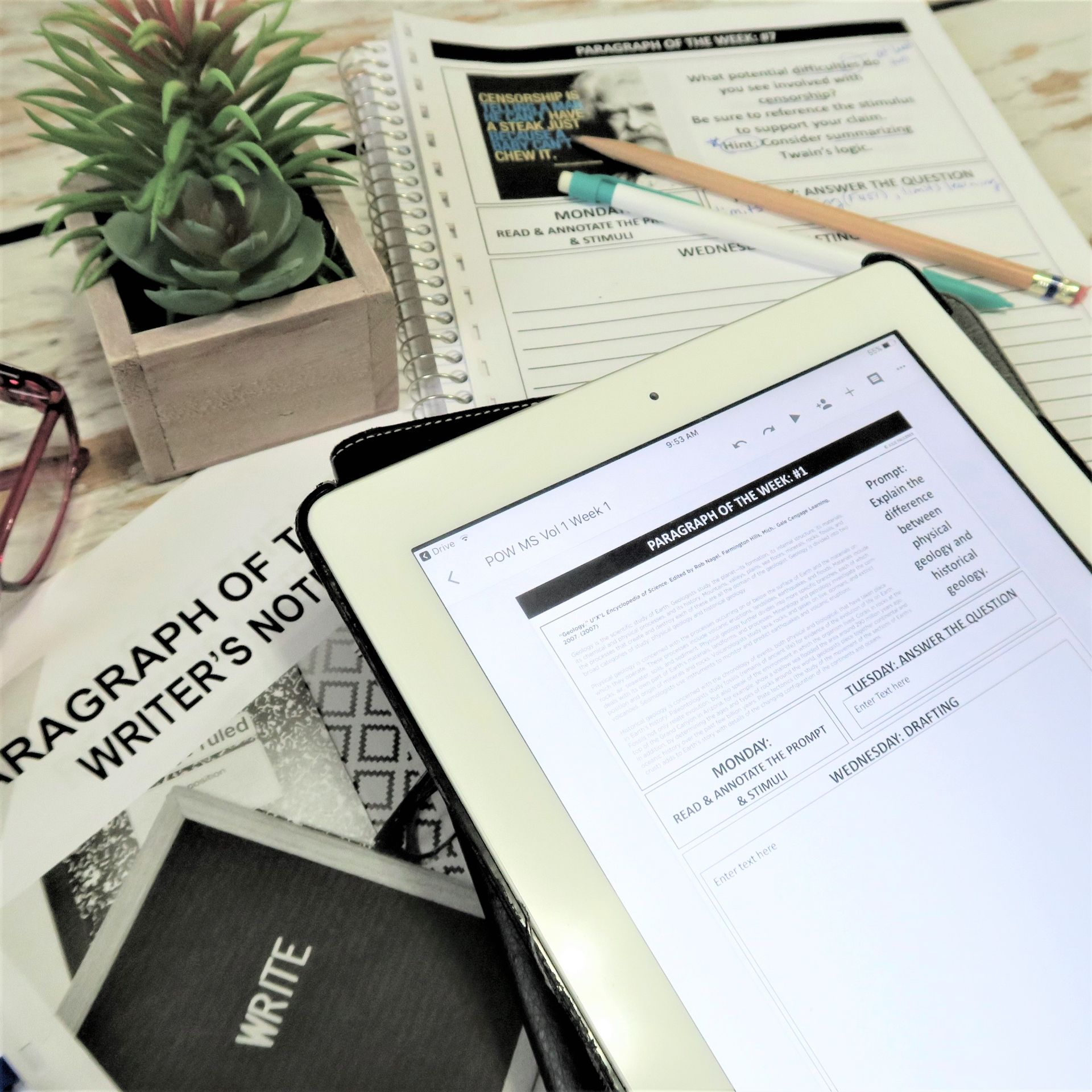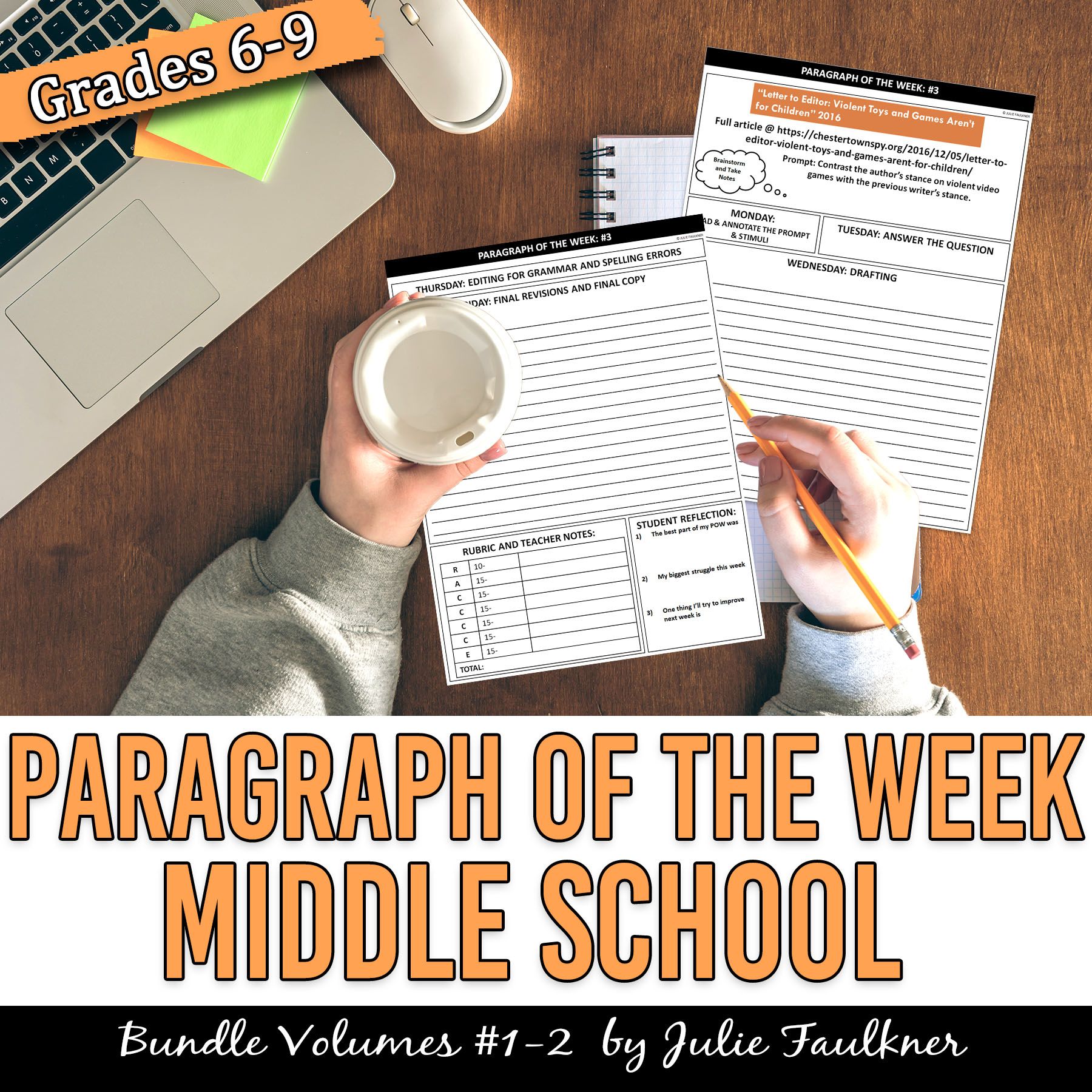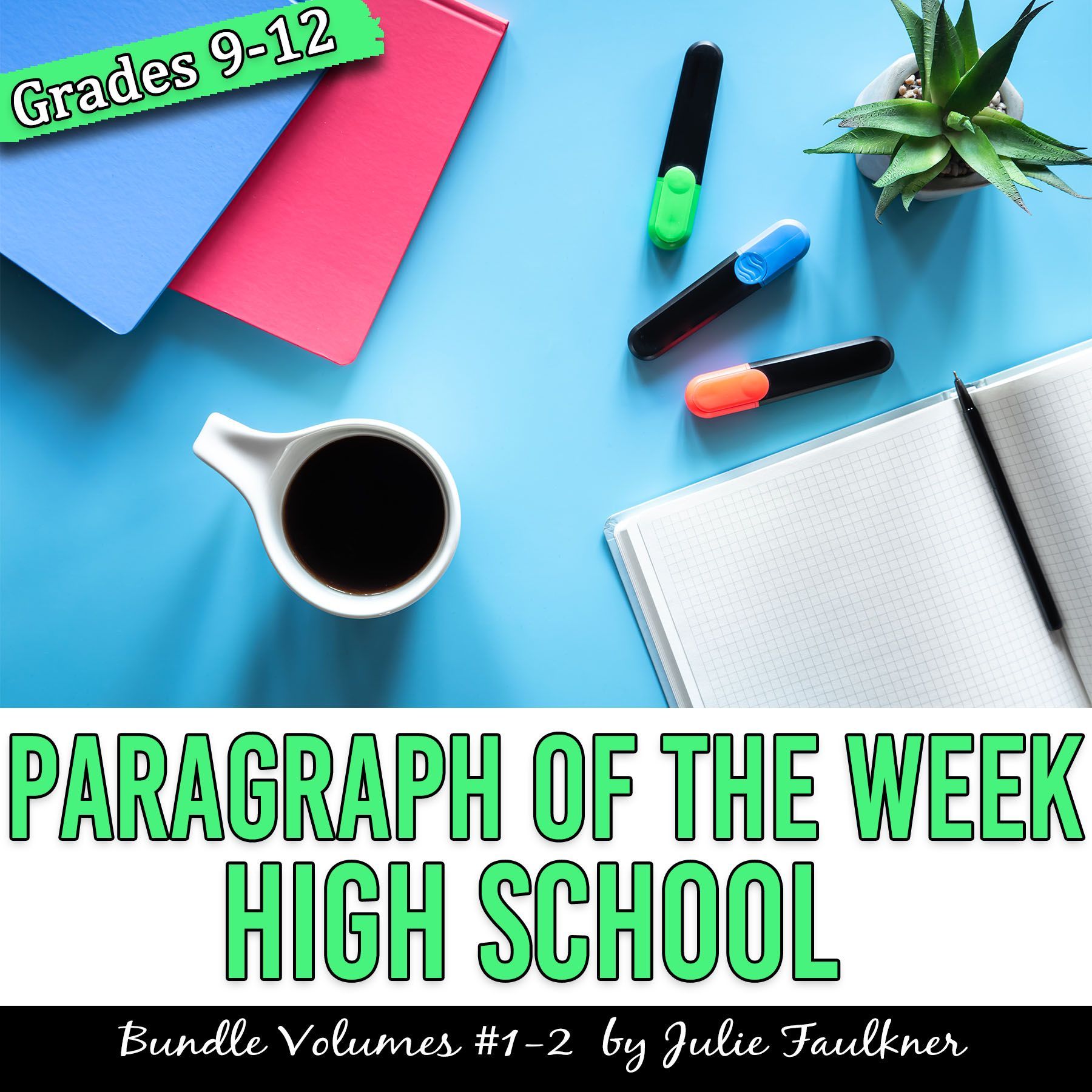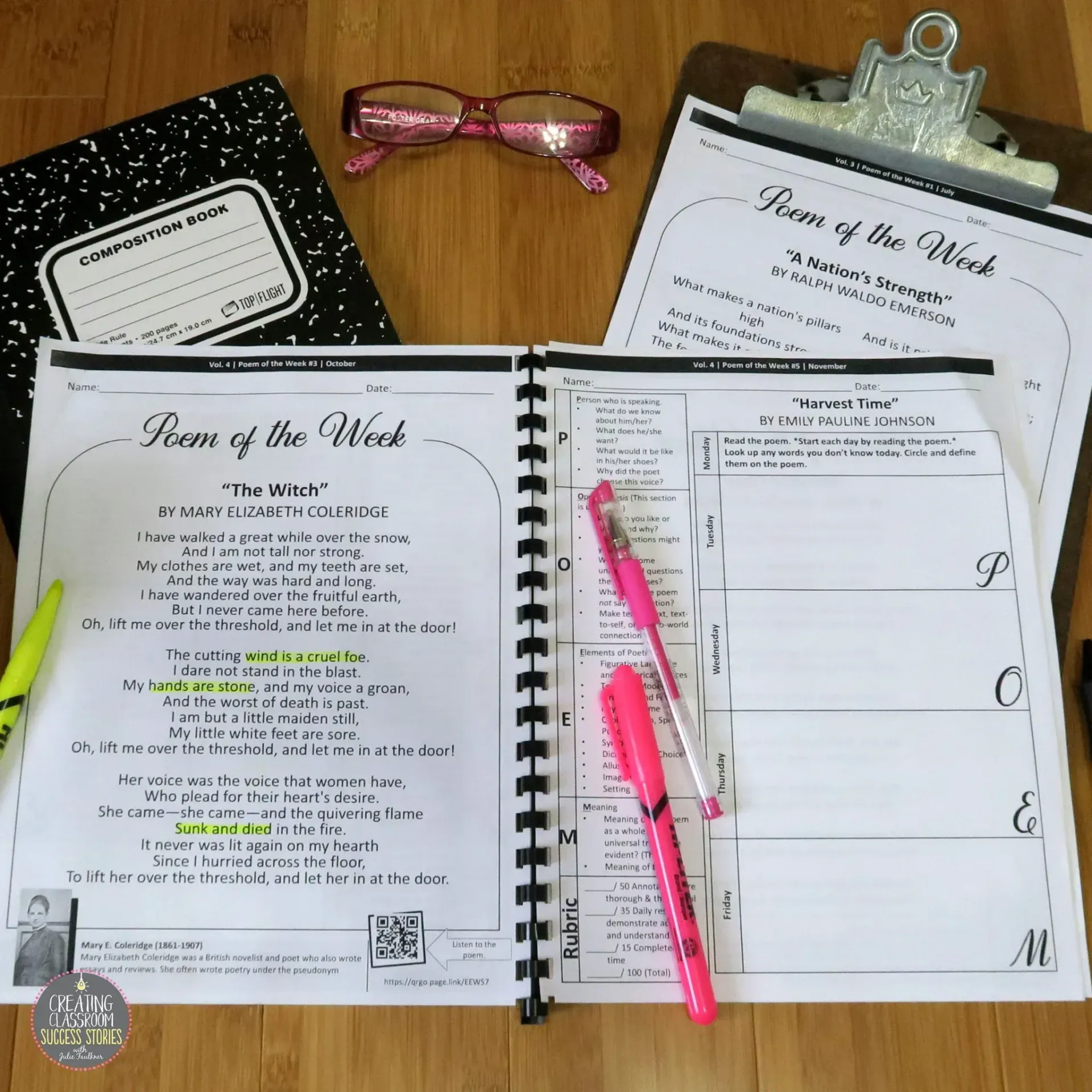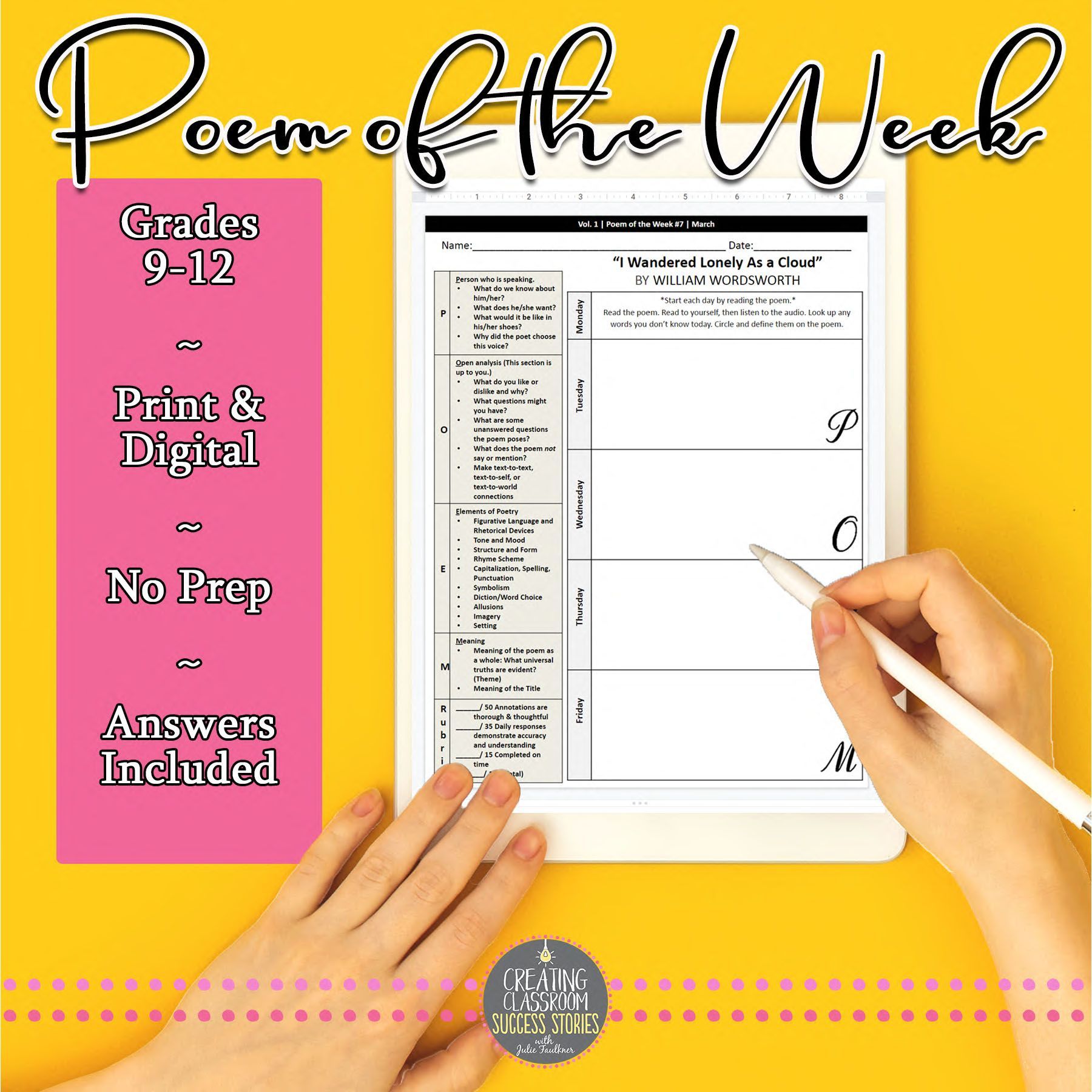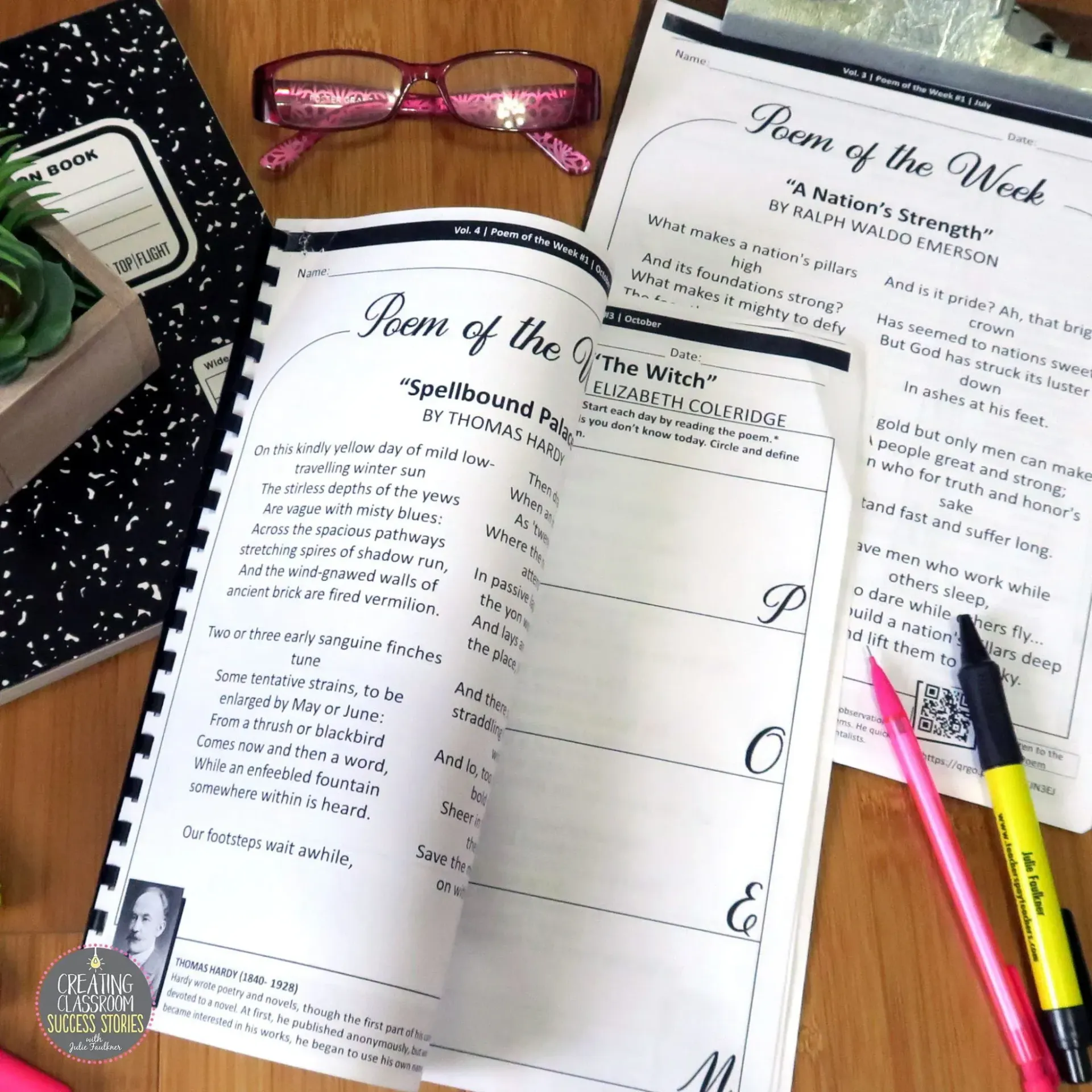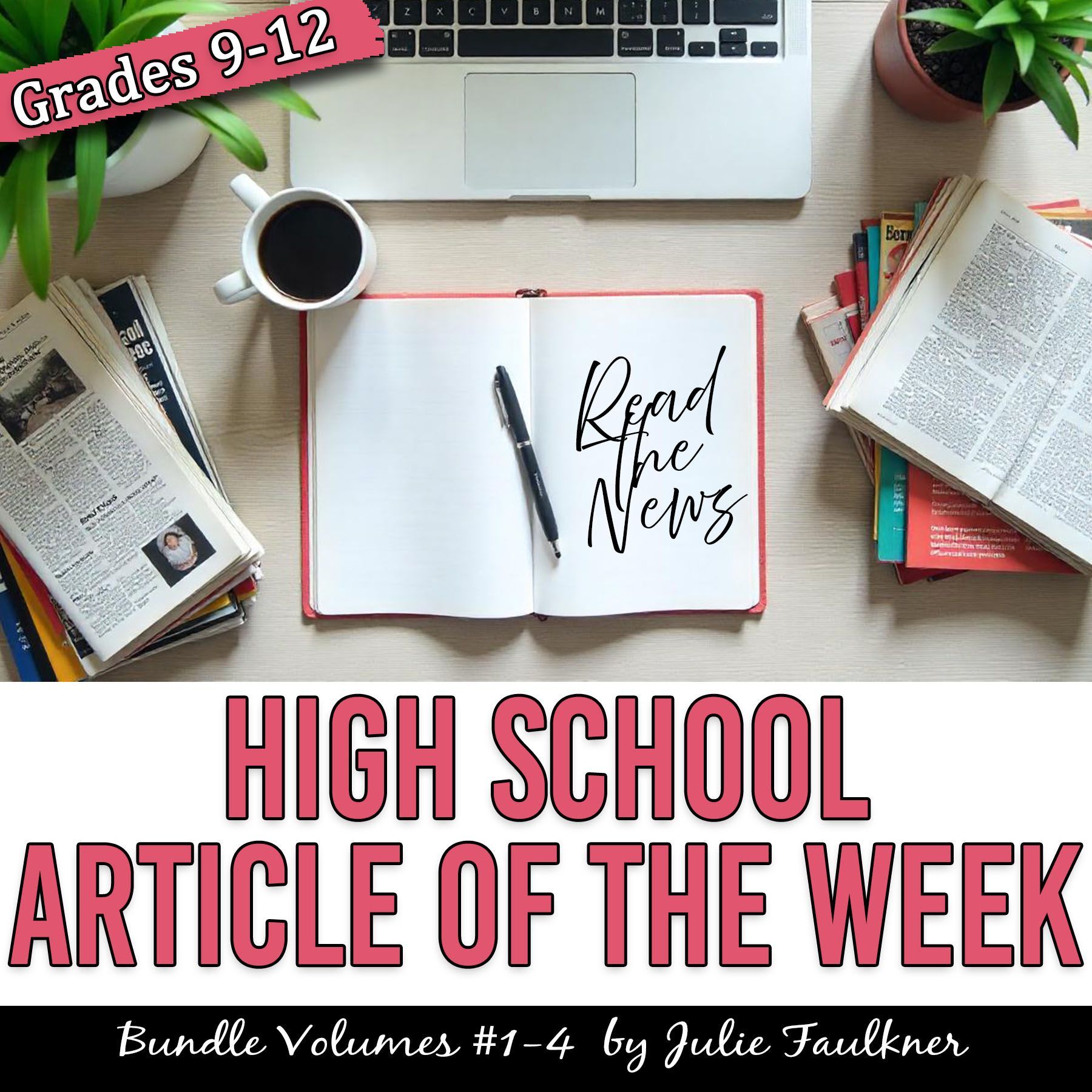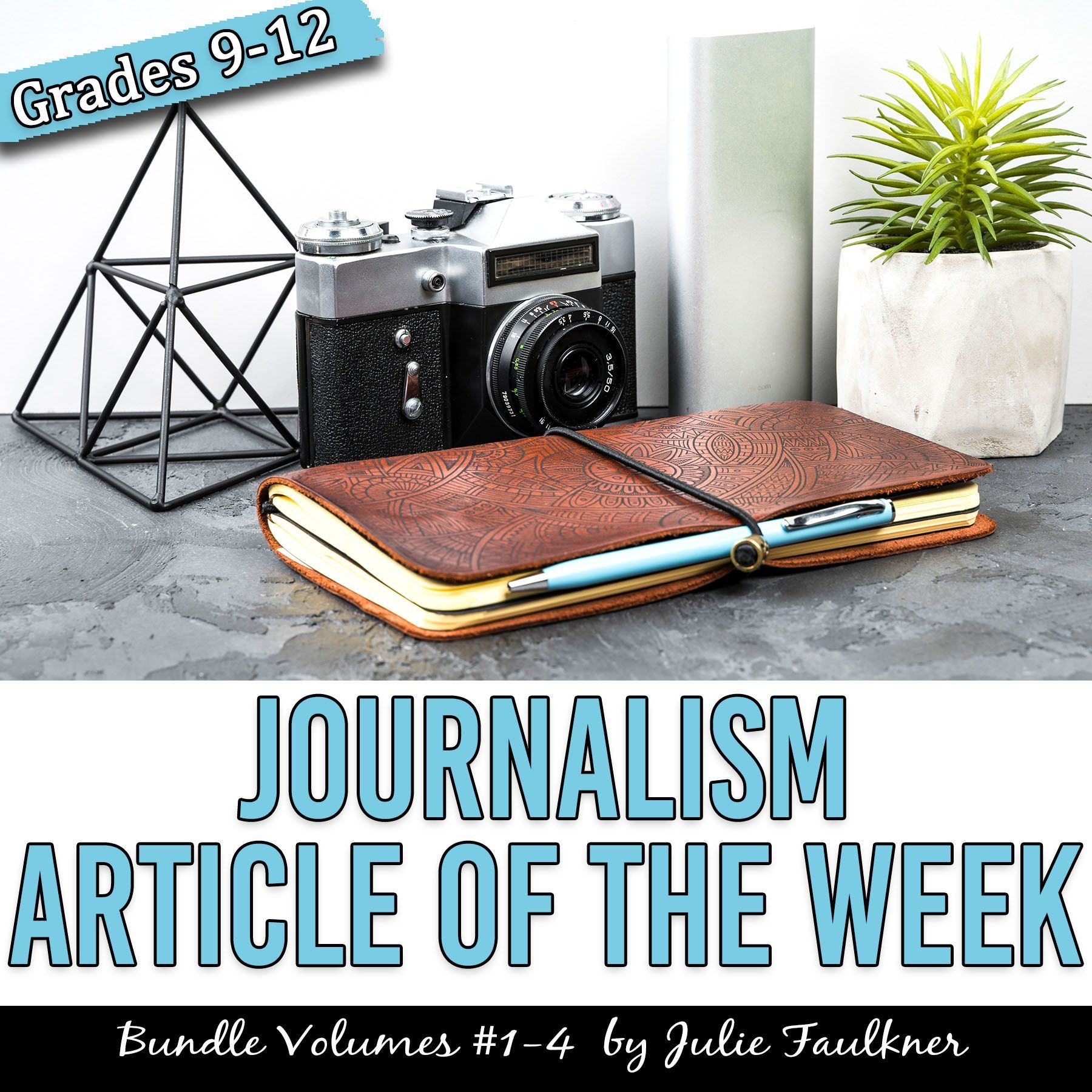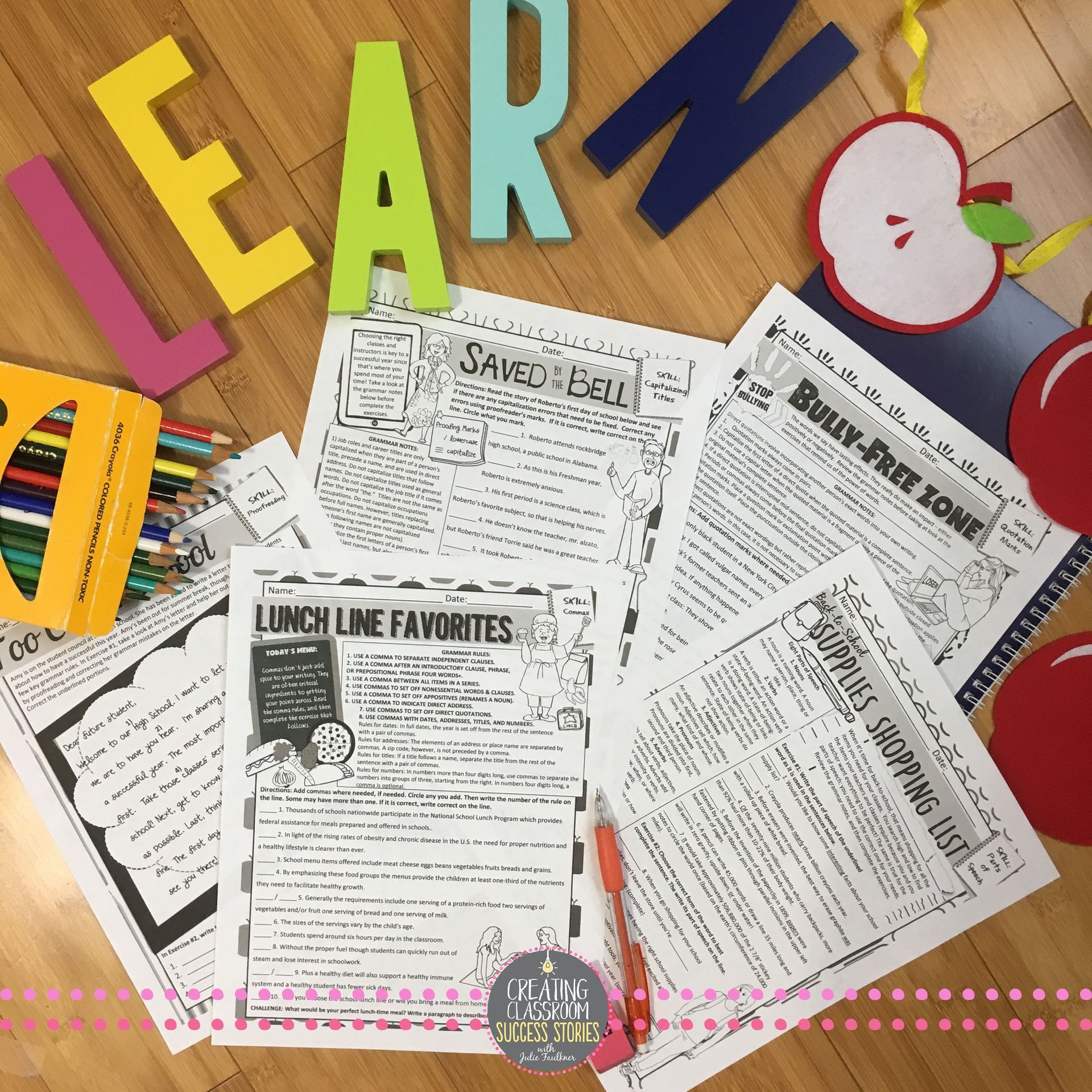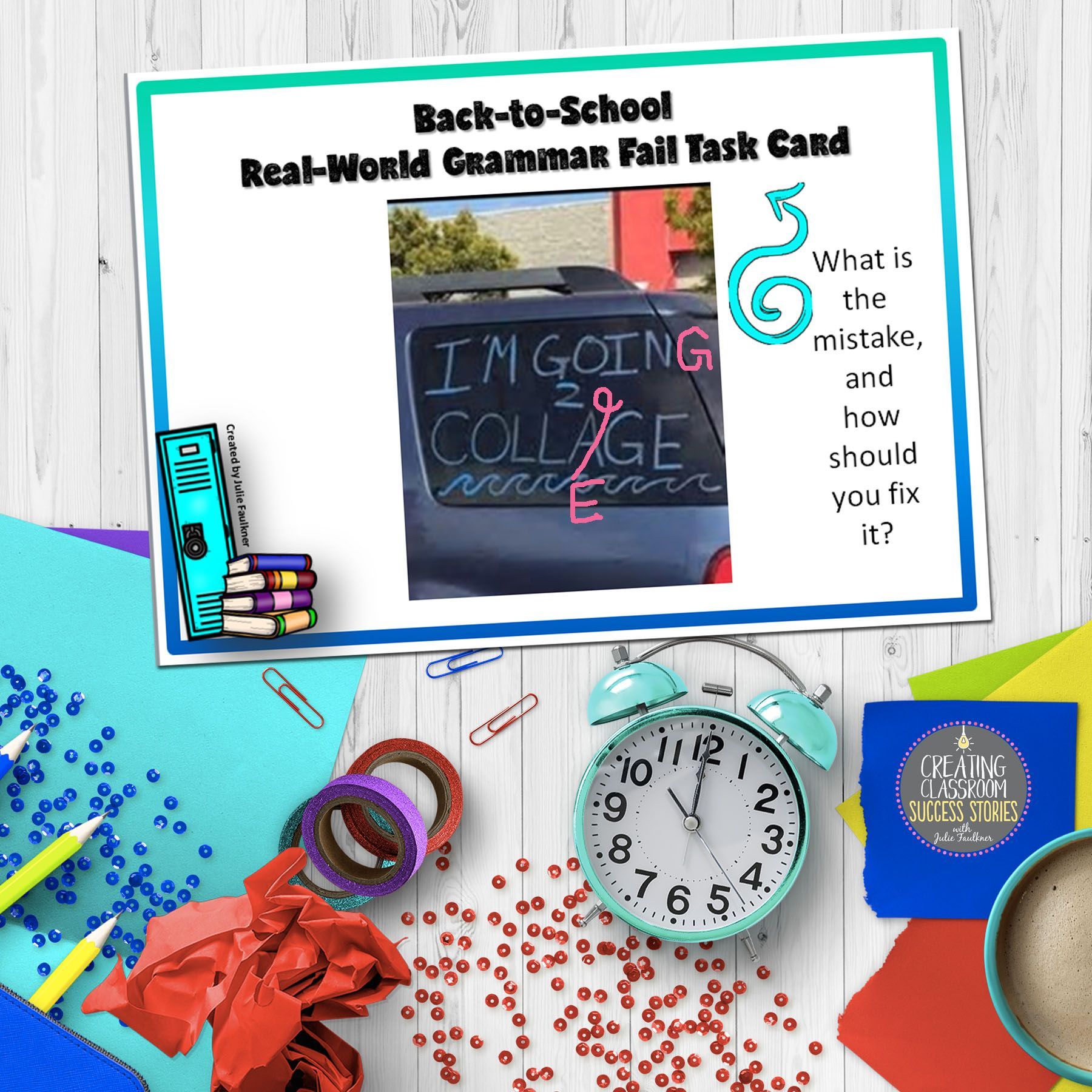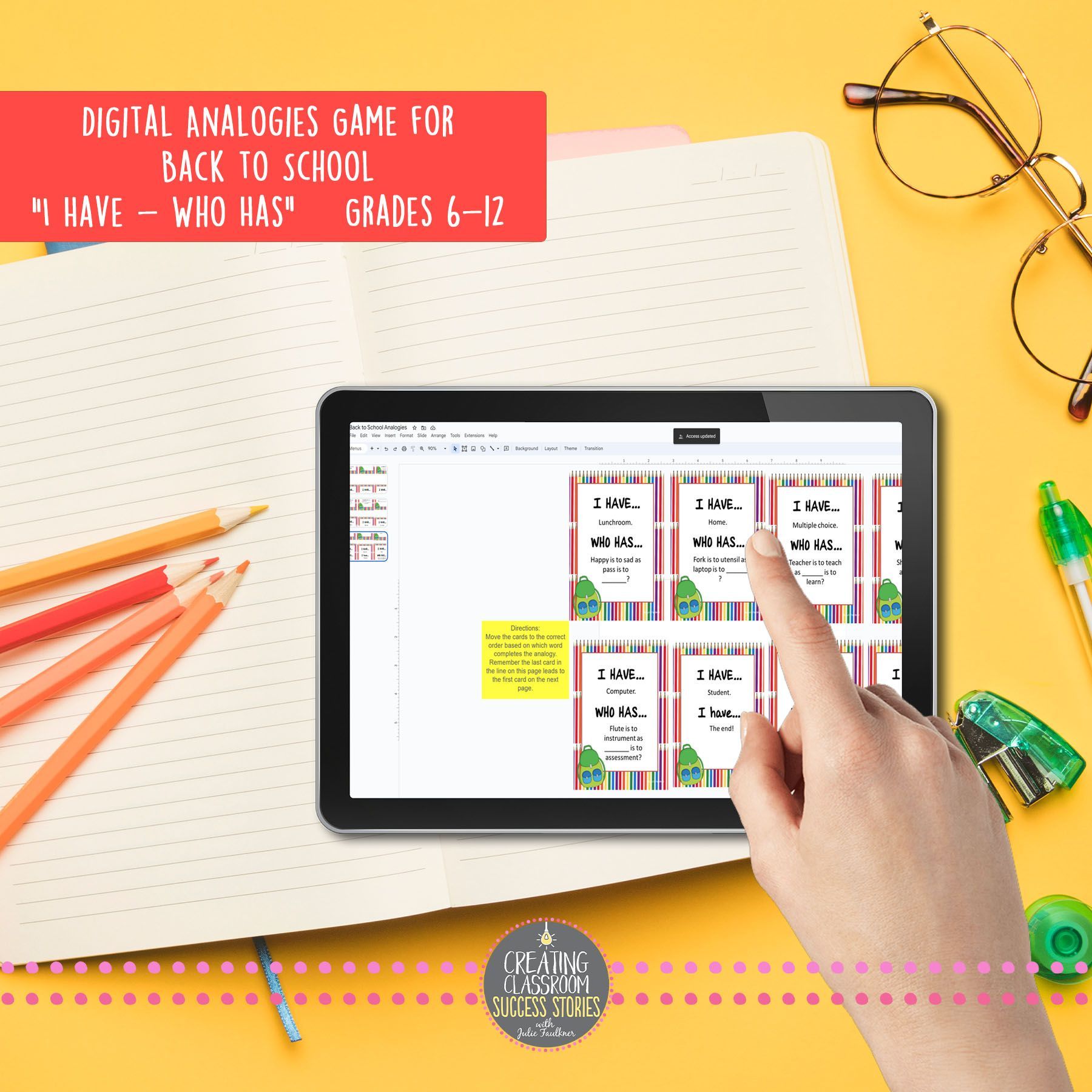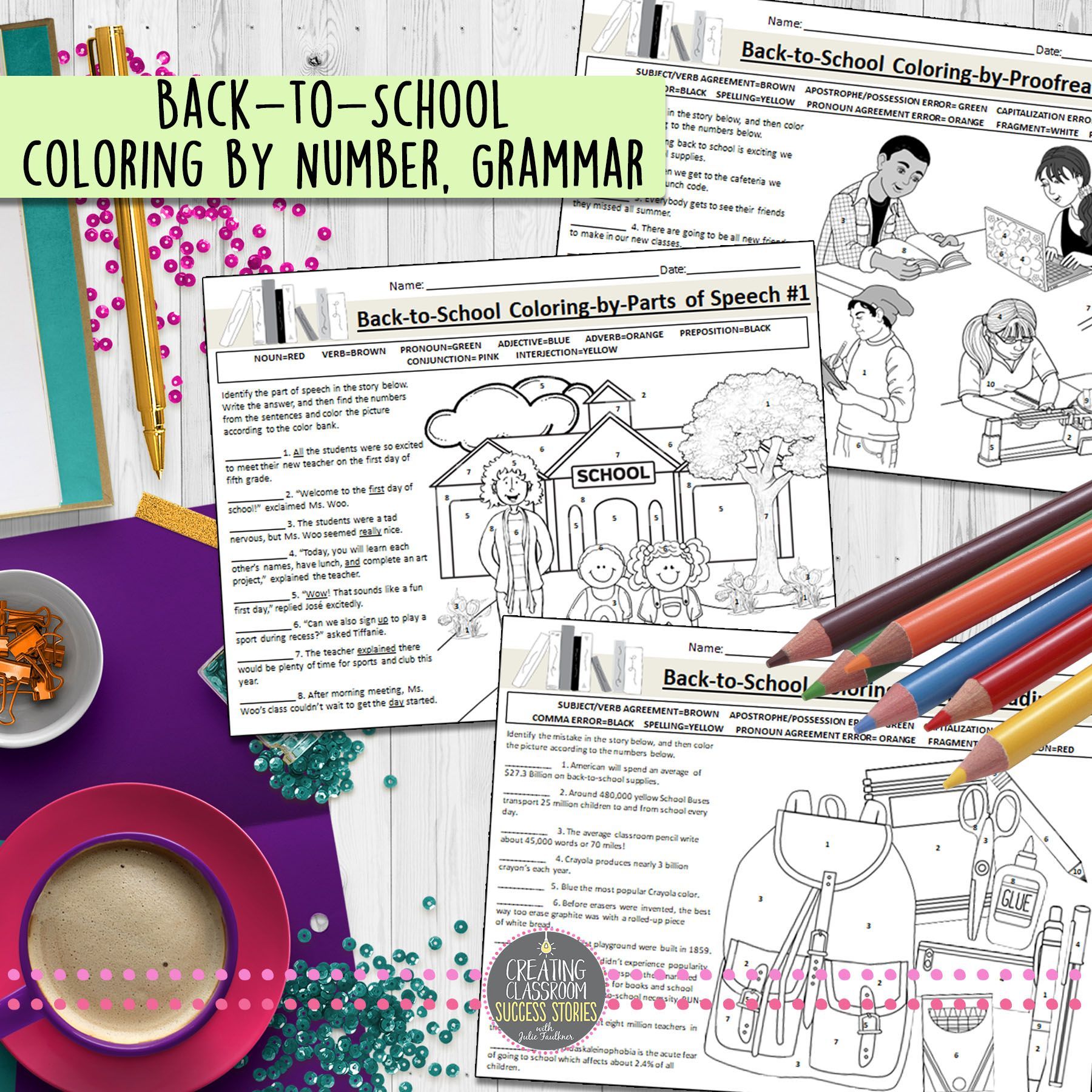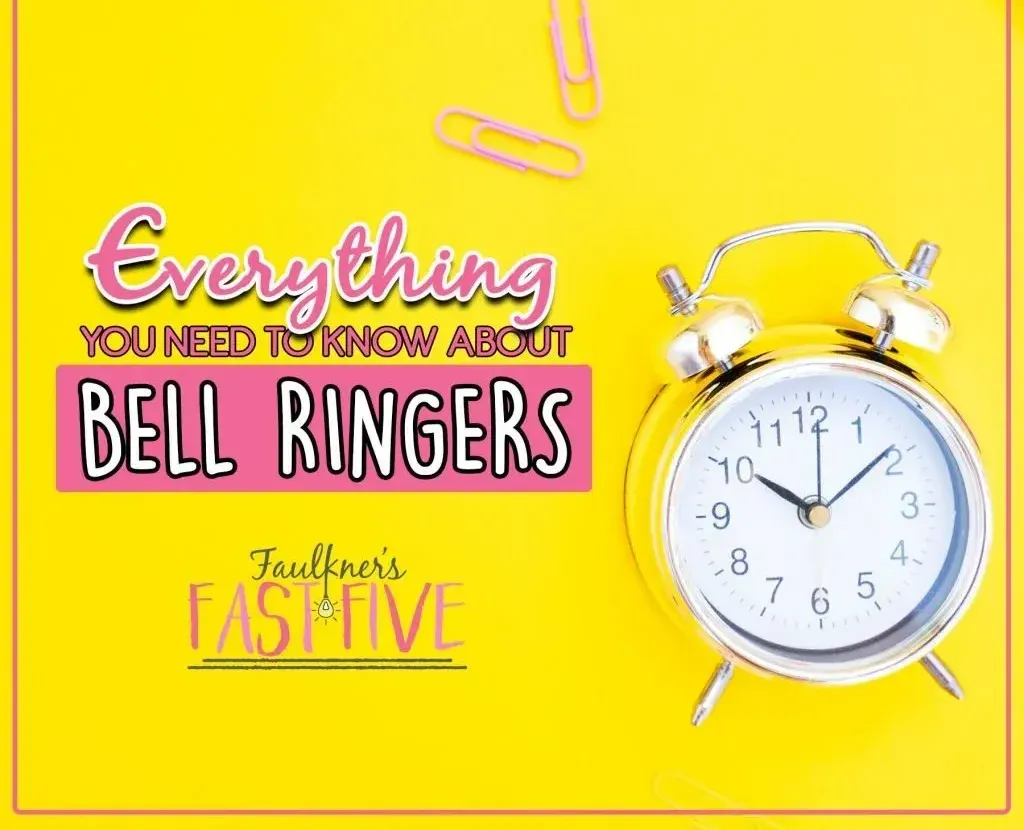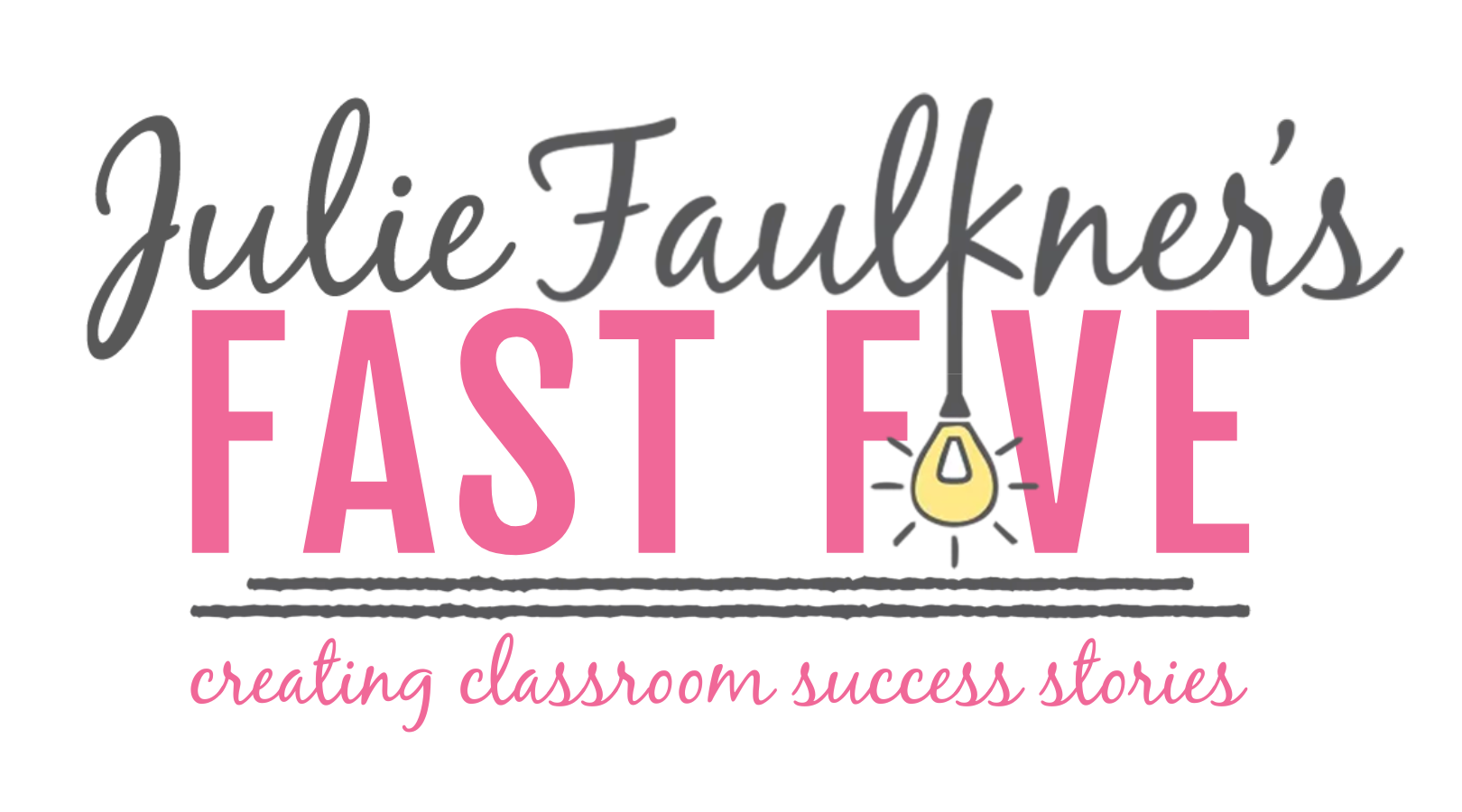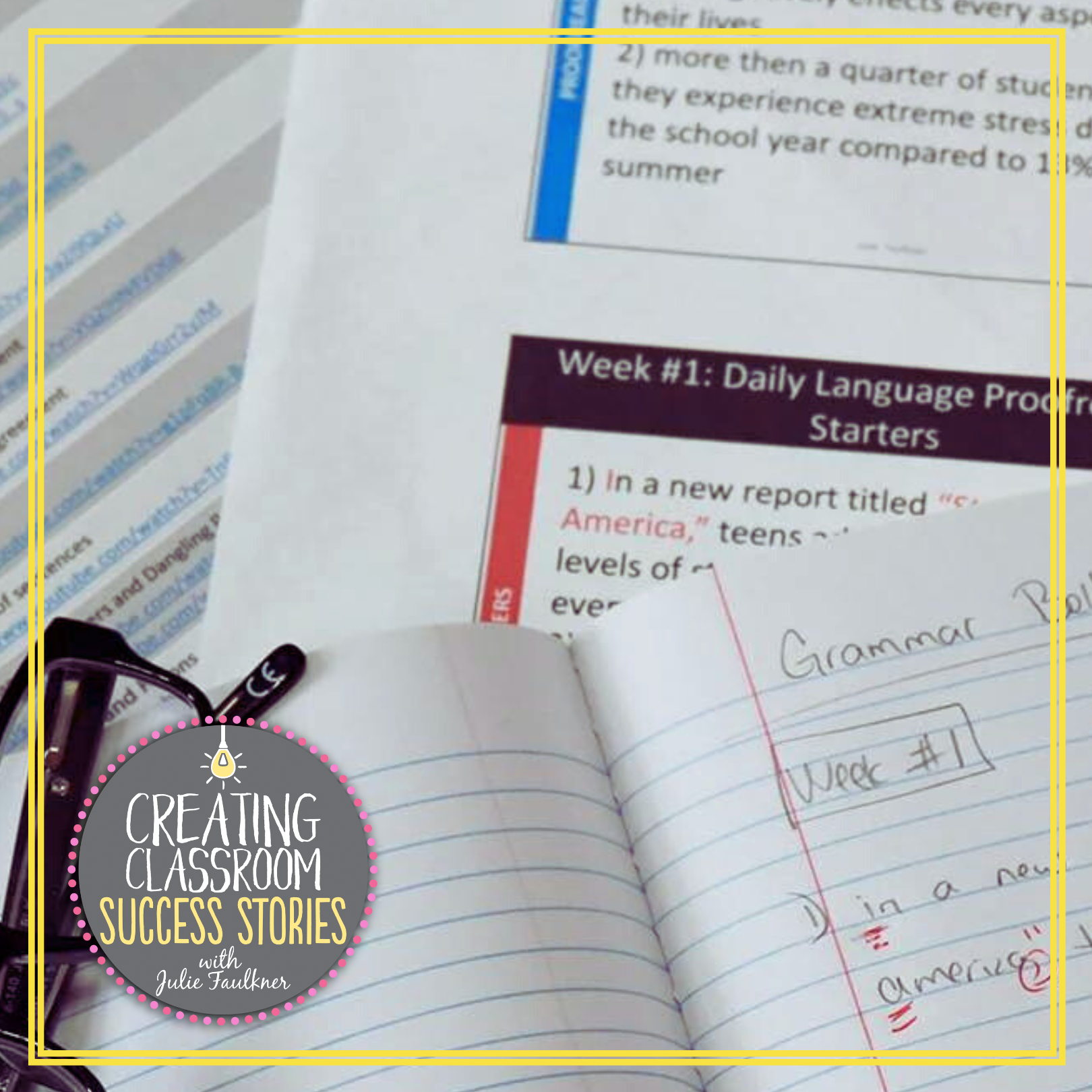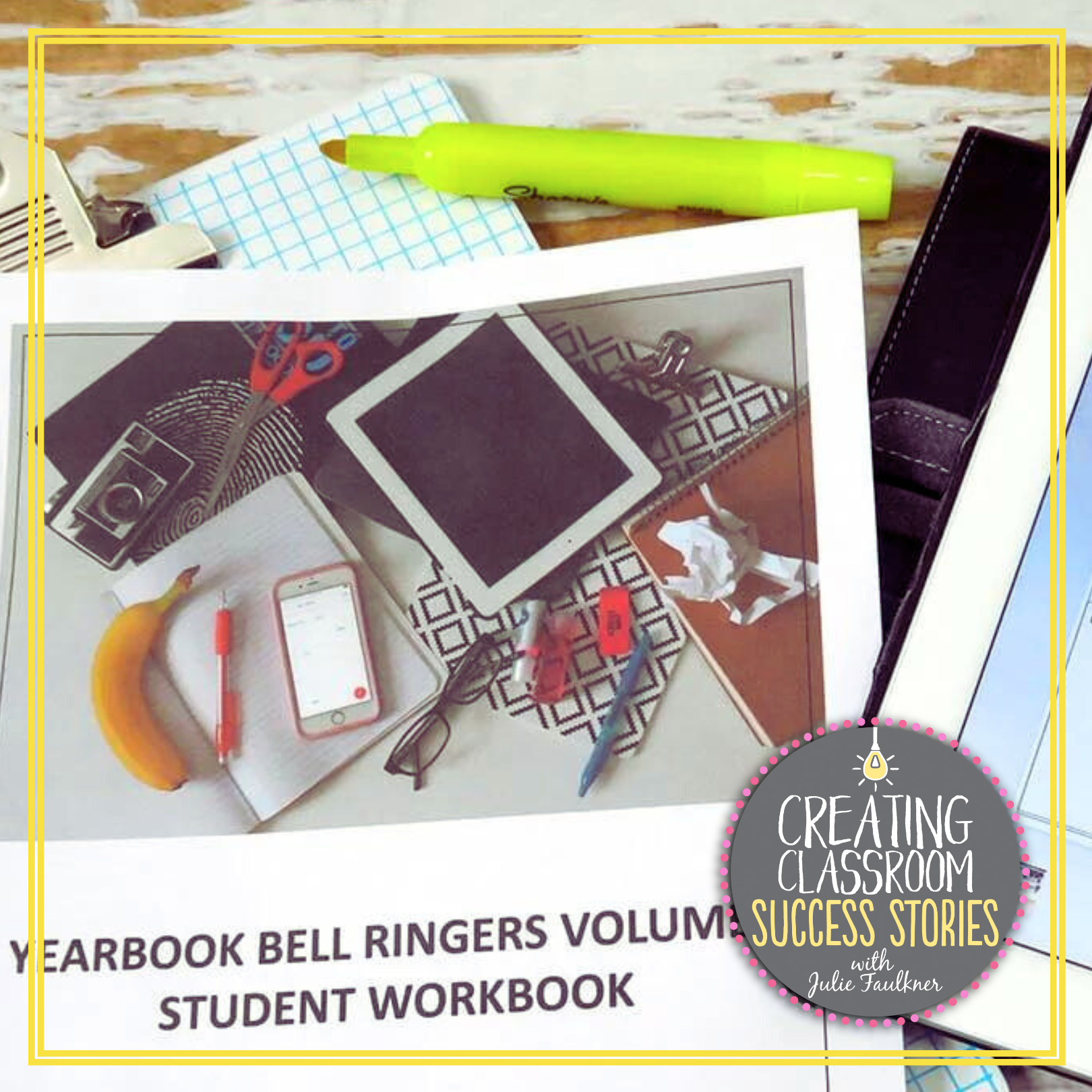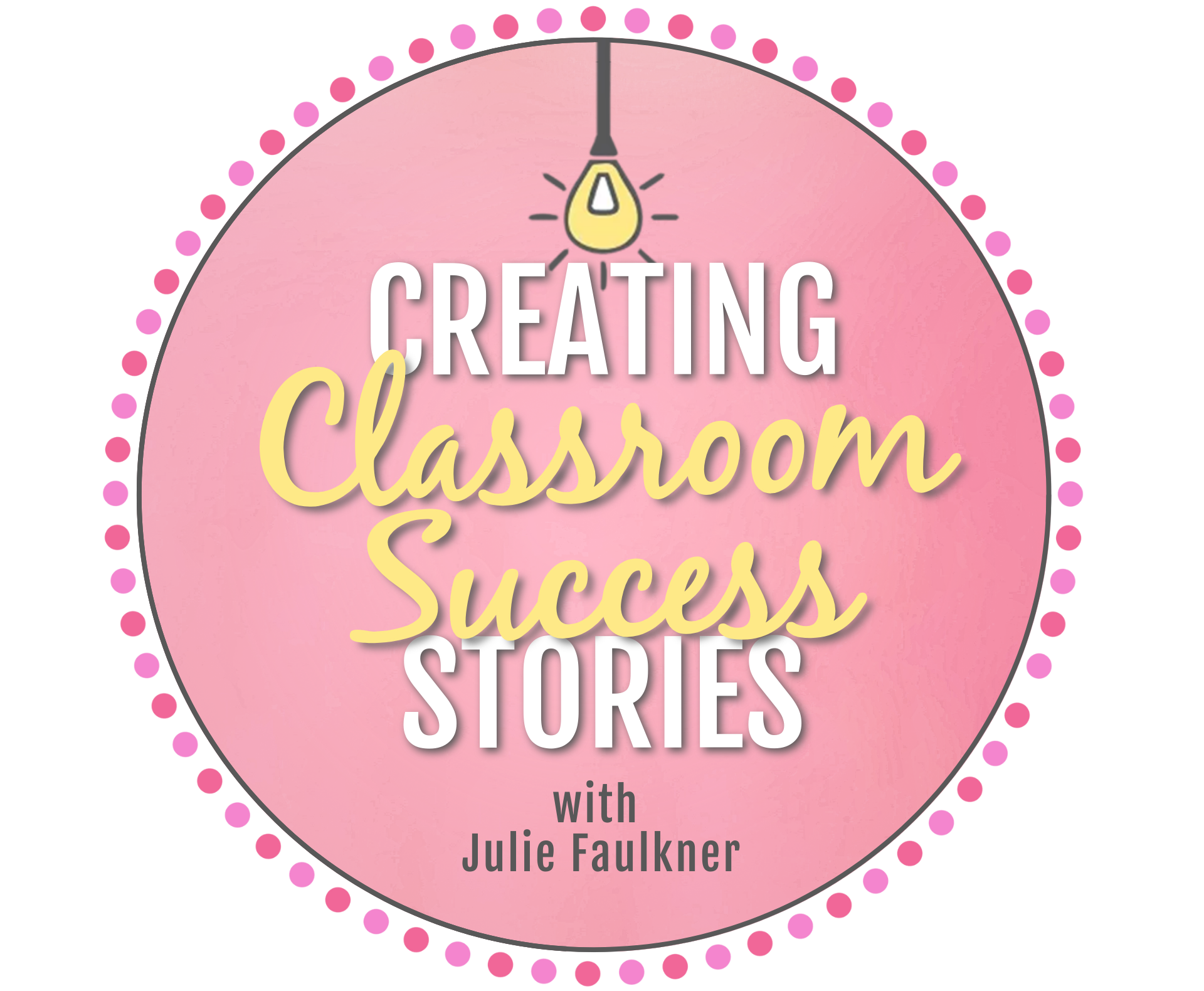No-Prep High School & Middle School ELA Bell Ringers for Every Day of the Year
If you're an ELA teacher looking for consistent, no-prep bell ringers for high school students, this post is your goldmine. With 36 weeks of grammar practice, writing prompts, poetry analysis, or reading comprehension activities, you’ll have your entire year of bell ringers planned—before school even starts. These aren’t just random warm-ups. They’re unique week-at-a-time resources in a cohesive, skill-based format that reinforce standards, improve classroom management, and set a purposeful tone for every class period.
Let’s break down how you can cover whichever ELA strand or standard serves your students best—with zero last-minute scrambling.
Grammar Bell Ringers: Daily Practice That Sticks
If you’re tired of reteaching commas and subject-verb agreement after every major writing assignment, grammar bell ringers are your best ally. A short sentence-editing task each day helps students build grammar and mechanics skills over time—without overwhelming them (or you). I use my 36-week Ten-Minute Grammar system to spiral in key concepts like fragments, punctuation, agreement, and more. Just a few minutes a day = major gains. Read more in this blog post about my Ten-Minute Grammar Program for Middle and High School.
Classroom Success Stories:
"This curriculum is so great! I feel as though it really helped my students understand the conventions of the English language so much better. It helps to build a routine with grammar, but it is not too hard or too much for the students. 10/10 would buy again!"
-Joshua F.
"My students really enjoyed being able to come up to the whiteboard and make revisions to the paragraphs. "
-Bete R P.
Writing Bell Ringers: Paragraph-of-the-Week Prompts
Get your students writing consistently with structured paragraph prompts that build over the week. This style of writing bell ringers guides students through brainstorming, drafting, revising, and reflecting—all in bite-sized pieces. They’re ideal for routine writing practice and for strengthening skills that show up in formal essays, constructed responses, and test writing tasks.
Classroom Success Stories:
"Love this resource! My students are able to work on their writing skills without it being overwhelming. "
-Ashley C.
"Thank you so much. I have moved grades a lot and was very excited to find weekly paragraph writing for older kids."
-Kyle J.
Shop middle and high school ELA here.
Poetry Bell Ringers: Short Texts, Big Thinking
Poetry doesn’t have to be intimidating. A "Poem of the Week" bell ringer using a short, high-interest poem can help students grow more comfortable analyzing figurative language, tone, diction, and structure. They dive in with a specific, but new, task each day to keep it fresh and to produce more in-depth interaction with poetry. My poem-of-the-week resource for high school is designed to be quick, accessible, and discussion-friendly—perfect for the first ten minutes of class each day. With this resource, there is no more IDK with poetry. Read that blog post here. I also explain a bit more about my Poem of the Week Daily Bell Ringers in this video on Instagram, flip through this highlight, or see this post with a video walk-through.
Classroom Success Stories
"I'm not going to lie, my students did not like this resource. However, the reason they did not like it was because that meant they had to do more than just simply read the poem and summarize it. This resource required students to look deeper at each poem and work each day to truly comprehend what was being asked of them. I loved how this resource made the students slow down and read to understand and gain a deeper understanding of what was being asked of them."
- Jada
"Love how this resource is set up, and I love the Acronym worksheet!"
-Jennifer
Reading Bell Ringers: Informational Texts Article of the Week
Whether it’s a current event or a thought-provoking article, reading bell ringers help students sharpen close reading, annotation, and comprehension skills. The short nonfiction texts in my Article of the Week resource are great for building reading stamina and background knowledge. With this resource, I've designed daily tasks unique to the articles linked in that give students a meaningful and skills-based reason to revisit the article of the week each day. Except for the day students are answering the provided questions, the tasks can be completed in 10 minutes or so! Read "Everything You Need to Know About Article of the Week" or watch me explain it in my Instagram Highlights.
Classroom Success Stories:
"I have tried for years to incorporate AOW into my curriculum but have never really found anything that sticks or that I felt was organic. This year alone, I have now tried 3 different formats, including Julie Faulkner's way, and her bundle of pre-made worksheets has worked best. Providing a pre-made worksheet with the article addresses all levels of student ability rather than just asking them to write a response. This provides more direction and structure. I did have to remove her rubric as it was far too general and had larger point values which led to too much ambiguity. I have made a more task-specific rubric instead but I appreciated the ability to edit all of the worksheets so that I could do that."
-Krysta
"Wow! This is one of the best resources I've come across. I've always struggled to fit in informational text standards, but this easy routine ensures that I hit all of them. Thank you so much!"
-Grace
Shop Article of the Week for ELA High School, ELA Middle School, and Yearbook/Journalism.
Beyond the Weekly Routine: Keep It Fresh and Flexible
Once in a while, you need something unexpected to shake things up. I also rotate in creative bell ringers like Real-World Grammar Fails Task Cards, Holiday/Seasonal Grammar Worksheets, seasonal Coloring-by-Number sheets, Interactive games, or hands-on sorting games. These bonus warm-ups keep the routine engaging while still hitting standards—and they’re a great way to review or preview upcoming units.
Classroom Success Stories:
"I needed to switch up how I use was using grammar instruction for bell work, and this resource has been perfect. "
- Janeen W. (on the Real-World Grammar Fails Task Cards)
"Thank you for this resource! I use this about once a week for morning work so my 11th grader can brush up on some grammar!"
-Jamie S. (on the Seasonal Grammar Worksheets)
Shop Grammar Fails, Seasonal Worksheets, and Hands-On Sorting Games
Read on more about bell ringers at this post: "Everything You Need to Know About Bell Ringers."

